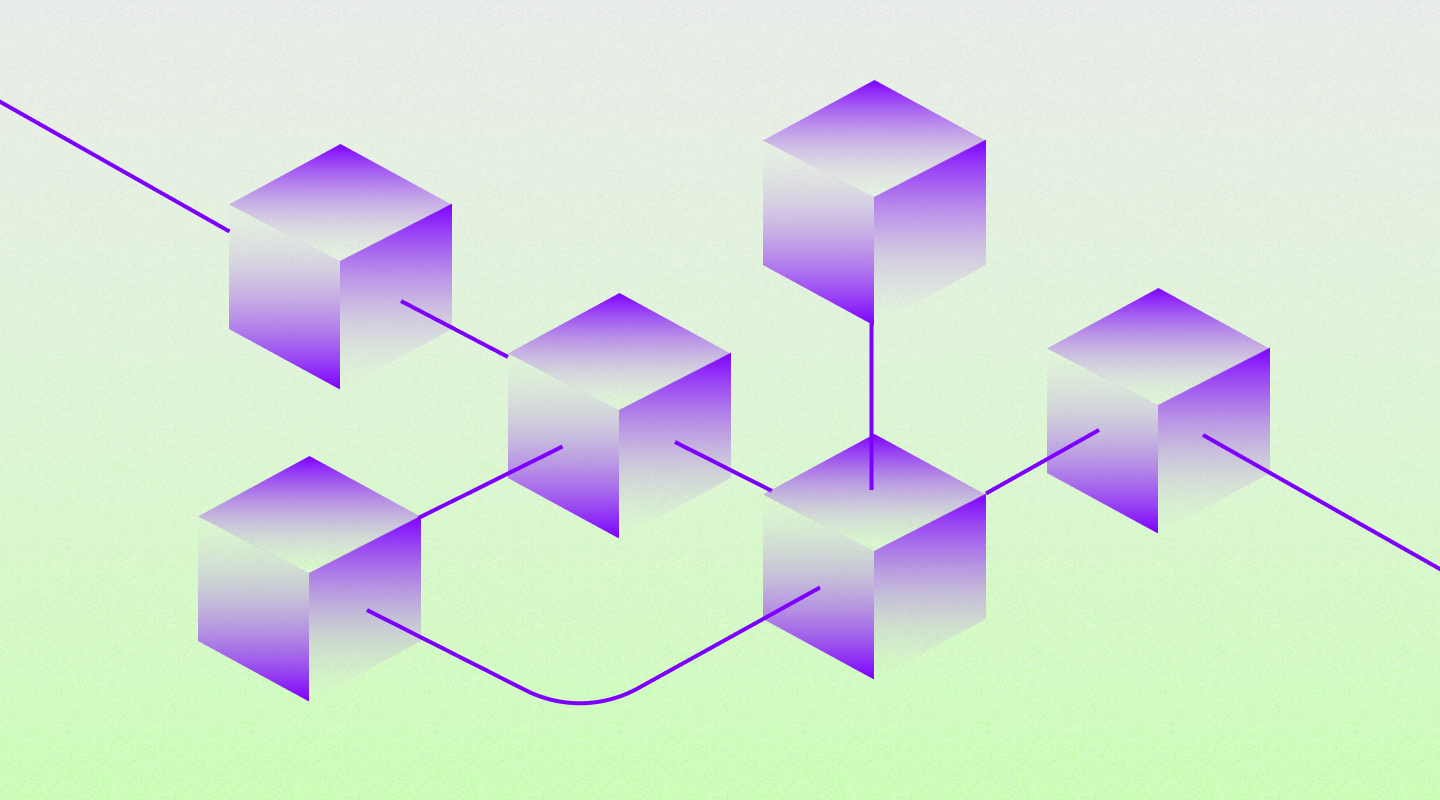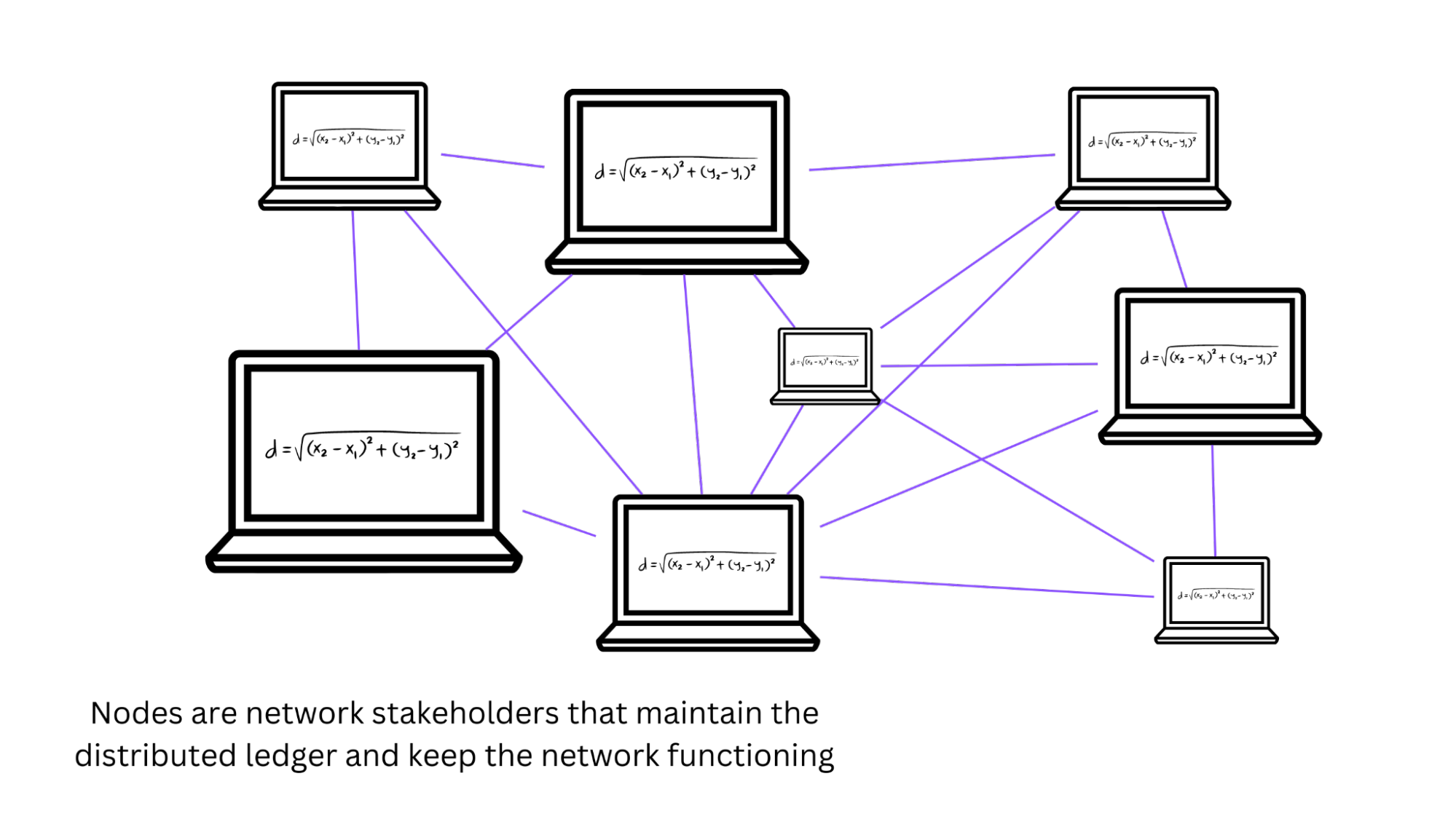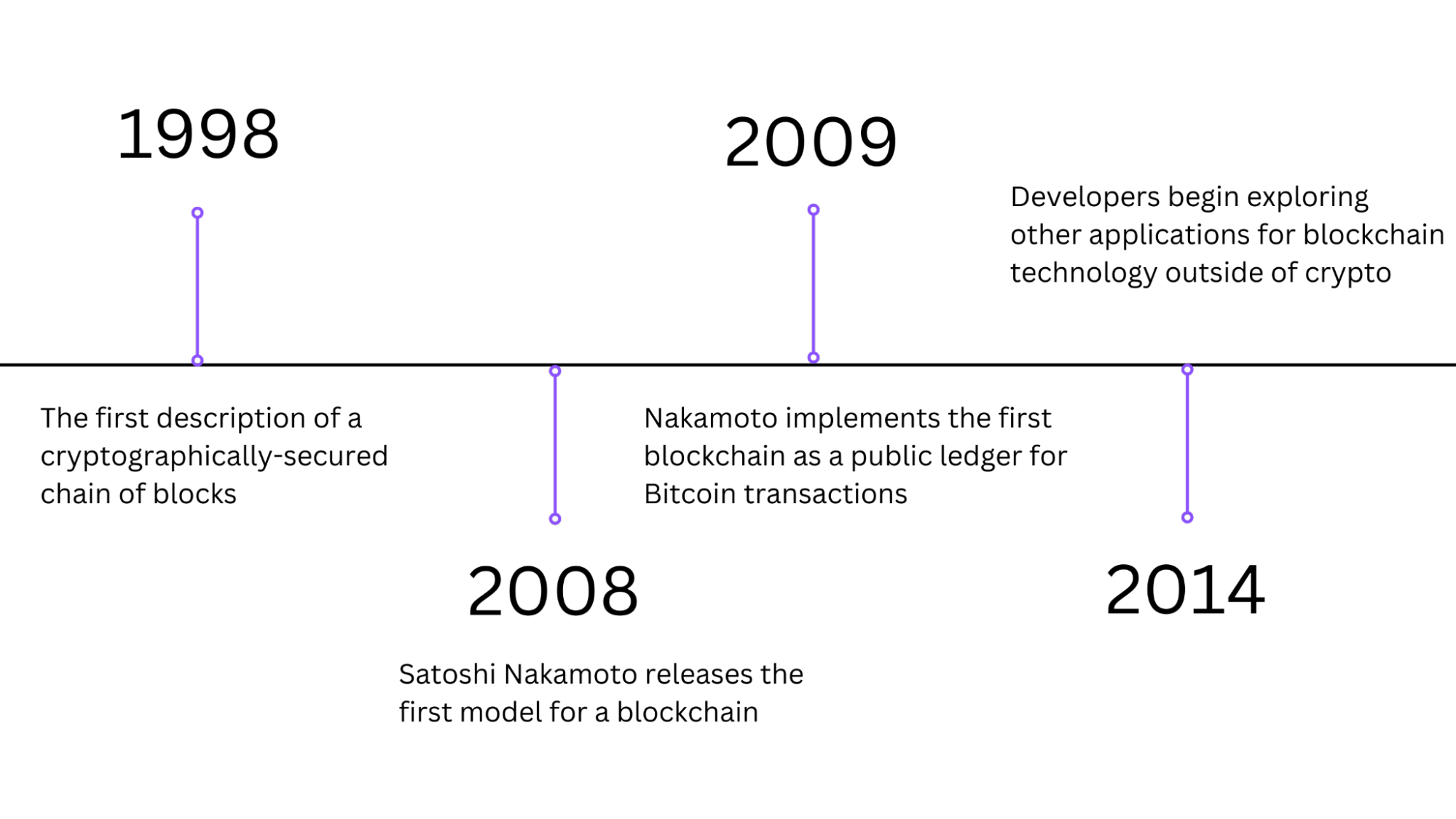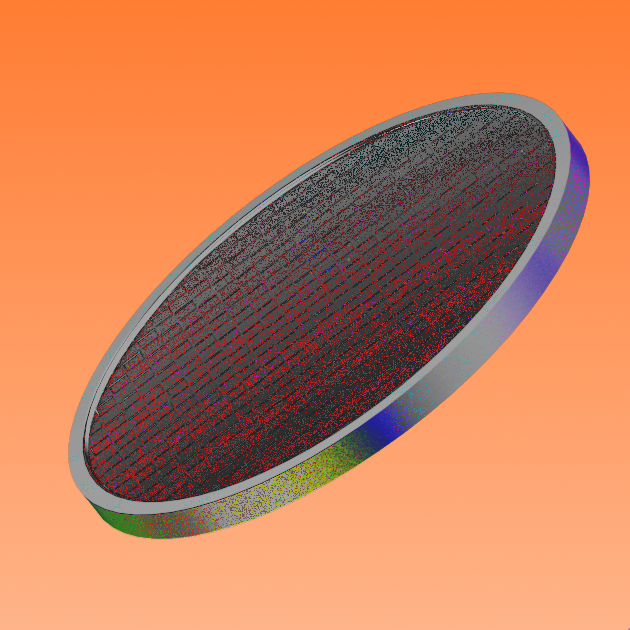Blockchain and AI: Where data meets trust and intelligence
Learn how artificial intelligence (AI) and blockchain technologies are working so well together, using real-world examples and use cases.
By Sankrit K

Artificial Intelligence (AI) and blockchain, two revolutionary technologies that have long been the centerstage for computer science researchers and developers, are finally breaking free from the confines of research facilities and entering the mainstream.
For years, the lack of accessible technology and mature user interfaces hindered the widespread adoption of both artificial intelligence and blockchain. In order to actually use these technologies, you had to be a computer mastermind or needed special access, like a corporate or academic network.
This article will explore the symbiotic relationship between AI and blockchain, diving into the specific ways in which they can help each other and their potential impact on various industries.
Current limitations of AI and blockchain technology
AI, with its ability to simulate human intelligence and automate complex tasks, has been transforming industries across the globe.
From personalized e-commerce recommendations to autonomous (self-driving) vehicles, AI has shown its potential to revolutionize the way we live and work. Yet, despite its advancements, AI has faced challenges – trust, transparency, and accountability to name a few.
Enter blockchain technology.
Blockchain has gained attention for its ability to establish transparency and reliability in digital transactions and take the middleman out of the equation. Its distributed nature and cryptographic algorithms help to make transactions tamper-proof and more transparent.

Just like AI, blockchain is not without its downsides. Fortunately, when blockchain and AI converge, they have the power to mitigate some of the most pressing concerns surrounding the two technologies.
How can blockchain improve AI?
Ever since AI entered into our daily lives, the productivity of individuals has gone parabolic.
From content creation to product development, AI is used in many modern workflows.
But, there are certain downsides of most mainstream AI models that can be addressed by blockchain technology. Some of them are:
- Databases are opaque and siloed
- Generative content can be inaccurate and redundant
- Neural networks can be vulnerable to adversarial attacks
Here's how blockchain can help to improve artificial intelligence.
Create transparent data markets
Currently, artificial intelligence databases often lack transparency, and the outputs generated by many AI models lack explainability. Simply put, the "why" behind AI's decision-making remains a mystery.
In many cases, these datasets are proprietary or inaccessible, making it challenging to understand the quality, biases, and potential limitations of the data.
Therefore, AI systems may inadvertently perpetuate biases or make decisions based on incomplete or skewed information. This lack of transparency undermines trust and hinders the wider acceptance and adoption of AI technology.
This opacity poses significant challenges in various domains, particularly in healthcare, research, and defense, where reasoning is paramount.
At its core, blockchain technology consists of a distributed database with built-in security and trust mechanisms, offering a promising solution by enabling the creation of transparent data markets.
The use of blockchain in creating transparent data markets not only benefits AI developers and data providers but also facilitates greater accountability and explainability in AI systems.

Through blockchain's tamper-proof nature, the entire lifecycle of data, from collection to training to model deployment, can be recorded and audited. The auditability of blockchain helps to ensure that potential AI models are built on reliable and trustworthy data sources, enhancing the explainability of their outputs.
An obvious question that arises is, "Can’t we simply make the model open-source?"
While open-source AI models can promote transparency and enable community collaboration, blockchain technology still offers value even in such cases. Some of them are:
- Data integrity
- Distributed governance
- Traceability
Watermark media cryptographically
The line between human-generated and AI-generated content is getting blurrier than ever. That means more bad actors trying to pass off AI-generated content as legitimate content, potentially impersonating real humans to spread misinformation and propaganda.
This need for reliable content verification can be easily filled by blockchain technology.
Using blockchain, content can be cryptographically watermarked to establish its provenance. This means that content can be traced back to its source and verified at any point in time. Cryptographic watermarking could allow us to take significant steps towards preventing the harmful spread of misinformation, especially in critical contexts like national elections or controversies surrounding public figures.
The concept is relatively straightforward. By publishing media, such as images, videos, or articles, to a blockchain or decentralized data storage network like IPFS (InterPlanetary File System), we can establish an immutable and timestamped record of that content. This cryptographic watermarking associates the original content with a unique identifier or reference on the blockchain.

When the same content is subsequently posted elsewhere on the web, it can be cross-referenced with the original blockchain record, validating its authenticity and preventing manipulation or unauthorized replication.
Blockchain-based cryptographic watermarking can establish a trust layer that allows individuals, organizations, and users to verify the authenticity of media content. This empowers users to make informed decisions and helps prevent the rapid dissemination of fabricated or manipulated information.
Alternatively, a watermark can be applied to an AI model's output itself. This would create a digital fingerprint that can be used to easily distinguish between human-generated and AI-generated content. OpenAI appears to be experimenting with this.
This approach not only benefits the general public but also provides a valuable tool for media organizations, fact-checkers, and other stakeholders involved in verifying information.
Combat adversarial attacks on neural networks
Neural networks are the building blocks of AI algorithms. These networks are a complicated system of mathematical equations that can be trained to recognize patterns and make decisions based on the inputs provided.
Unfortunately, they are vulnerable to adversarial attacks. Adversarial attacks involve injecting maliciously crafted data into neural networks, with the intent of tricking them into making wrong predictions. As a result, neural networks can become blind to malicious inputs and make inaccurate predictions, even if the original dataset is good.
There are two main types of adversarial attacks:
Evasion attacks
Evasion attacks are designed to fool a model that has already been trained. These attacks work by creating inputs that are very similar to legitimate inputs, but that have been slightly modified to cause the model to make a mistake.
Poisoning attacks
Poisoning attacks are designed to corrupt the training data for a model. These attacks work by injecting malicious data into the training data, which can cause the model to learn incorrect patterns.
A great example of preventing these attacks is Cap_able – a clothing brand that created an entire collection of knitted sweaters based on adversarial attacks. Cap_able's pieces, from its manifesto collection, feature cleverly knitted patterns that can trick facial recognitions systems into thinking that the garment is a face!

In the above image, the sweatshirt/hoodie functions as a tool that can protect one’s facial biometric data. The algorithm on the textile hinders the object recognition software’s capabilities, causing it to recognize the textile as nothing, a “zebra”, or a “giraffe”.
Through blockchain technology, these attacks can be prevented or mitigated by introducing tamper-proof data validation and authentication processes. This will ensure that AI models are trained on reliable datasets and can detect malicious inputs.
Moreover, blockchain can incorporate reputation systems and consensus mechanisms to identify and mitigate adversarial behavior. Participants in the network can evaluate and rate the behavior and performance of neural networks.
Collaboration and collective intelligence are key in combating adversarial attacks. Blockchain technology provides a decentralized platform for sharing knowledge, insights, and defense strategies against them.
How can AI improve blockchain?
Compared to AI, blockchain is still very young. For perspective, the first instances of AI research can be tracked all the way back to the late 1900s, whereas blockchain was first developed in the early 2000s.

Hence, there are several caveats and limitations of blockchain technology that AI can help to overcome. Some of them are:
- Slow on-chain forensics
- Hurdles in decentralized application (dApp) automation
- Poor resources monitoring
Supercharge on-chain forensics
Decentralized finance (DeFi) is one of the easiest ways to transact in large volumes without revealing the identities of transacting parties. This anonymity also comes at a cost – an open invitation to crypto criminals. Companies like Chainalysis and bitsCrunch try to help combat this through on-chain forensics and data analytics.
On-chain forensics involves tracing and tracking transactions on blockchain networks to detect suspicious activity.
AI brings a range of cutting-edge technologies that can uncover hidden patterns, analyze vast amounts of data, and enhance data security and the effectiveness of forensic investigations.
Artificial intelligence can leverage machine learning algorithms to identify patterns and anomalies in blockchain data. By analyzing transactional data in real time, AI-powered systems can raise red flags and alert investigators to potential risks, helping them to take timely actions and mitigate threats.
"Artificial intelligence can greatly help in finding the malicious activities in the NFT space easily, for instance, wash trading, copy minting in the NFT market."
— Vijay Pravin Maharajan | Founder & CEO, bitsCrunch
For the longest time, on-chain forensics had been slow and tedious because it required manual processes. However, with AI technology and algorithms, the process can be automated and made much faster and more accurate.
Natural language processing (NLP) is another powerful tool in the arsenal of AI for on-chain forensics. Blockchain data often includes smart contract code, which can be complex and vulnerable to security flaws. NLP techniques can be applied to analyze and understand the text of smart contracts, identifying potential vulnerabilities or malicious code that could compromise the integrity of the blockchain network.
Enable dApp automation
Decentralized applications (dApps) are distributed, peer-to-peer services that run on a blockchain network. These applications often require users to interact with complex smart contracts, which can be time-consuming and difficult to navigate.
A micro-services architecture, combined with artificial intelligence's natural language processing capabilities, can be used to automate dApp interactions. This would make the user experience much more seamless and reduce the friction associated with interacting with smart contracts.
Here's an example.
Imagine a decentralized e-commerce platform built on the blockchain. This platform requires users to interact with a smart contract in order to purchase goods and services.
While smart contracts provide the foundation for executing transactions and enforcing rules on the blockchain, they often lack the dynamic capabilities required for efficient inventory management, personalized recommendations, and other complex functionalities.
This is where AI can step in to complement and augment the smart contract functionalities of dApps.
AI algorithms can be used to streamline these interactions, such as creating personalized product recommendations for shoppers, automating inventory management, and automatically routing payments.
Efficient resource monitoring
Many blockchains currently are notorious for being energy-intensive. AI might be able to provide blockchain networks with a sustainable solution for efficient resource utilization.
Limited processing power, low data storage capacity, and network congestion are plaguing the blockchain space. With AI, blockchain networks can be optimized in a way that not only reduces resource usage but also improves the overall performance of the network by dynamically allocating resources to where they are needed most.
AI algorithms can be used to identify patterns, monitor resource and data usage in real time, and adjust parameters accordingly. This will not only improve the scalability of blockchain networks but also make them more reliable and efficient.
This is particularly useful for private, blockchain-based business networks, since AI can be responsible for consensus and because blockchain can help provide explainability.
10 Industries that are embracing the blockchain and AI convergence
Blockchain and artificial intelligence are two of the most talked about technologies in recent years. So it's no surprise that combining AI and blockchain technology can produce powerful results.
Here are 10 industries that are already leveraging the two technologies together:
1) Supply chain management
Blockchain can provide transparency and traceability throughout the supply chain, while AI can optimize inventory management, demand forecasting, and quality control.
2) Healthcare
Blockchain can securely store and share patient data (such as a patient's health records), while AI can analyze medical records, assist in diagnostics, and support personalized treatment plans.
3) Financial services
Blockchain can enable secure and efficient cross-border payments, while AI can enhance fraud detection, credit scoring, risk assessment, and general financial security.
4) Energy and utilities
Blockchain can facilitate peer-to-peer energy trading and grid management, while AI can optimize energy consumption, predict demand, and enhance renewable energy integration.
5) Retail and e-commerce
Blockchain can enable transparent and secure transactions, while AI can personalize shopping experiences, provide targeted recommendations, and flag counterfeit products.
6) Insurance
Blockchain can streamline claims processing and enhance fraud prevention, while AI can assess risks, automate tasks like the underwriting process, and improve customer experience. automate underwriting processes,
7) Real estate
Blockchain can simplify property transactions, enable fractional ownership, and automate rental agreements, while AI can assist in property valuation and optimize real estate investments.
8) Intellectual property protection
Blockchain can establish immutable records of ownership and copyright, while AI can help detect and prevent intellectual property infringement.
9) Gaming and entertainment
Blockchain can create decentralized gaming platforms with provable fairness and ownership of in-game assets, while AI can enhance game intelligence, virtual character interactions, and user experiences.
10) Government services
Blockchain can ensure transparent and secure voting systems, digital identity verification, and efficient public service delivery, while AI can automate administrative processes and provide data-driven insights for policy-making.
Blockchain and artificial intelligence final thoughts
Both blockchain and AI are inherently linked to data. As we transition to the third iteration of the internet (Web3), data will take center stage. Blockchain and AI are emerging as crucial vehicles for augmenting data and enhancing human experiences. In short:
Blockchain brings trust to data, while AI brings intelligence.
The powerful combination of blockchain's trust and transparency with AI's intelligence will allow us to unlock the potential for a richer human experience. The synergy between these technologies allows us to create systems that are not only reliable but also intelligent and responsive to our needs.
Begin your blockchain journey with MoonPay
Now that you know the basics of how blockchain and AI technologies work together, it’s time to experience them for yourself.
To get started, simply buy Bitcoin or your preferred cryptocurrency via MoonPay using your credit card or any other payment method.


.png)



